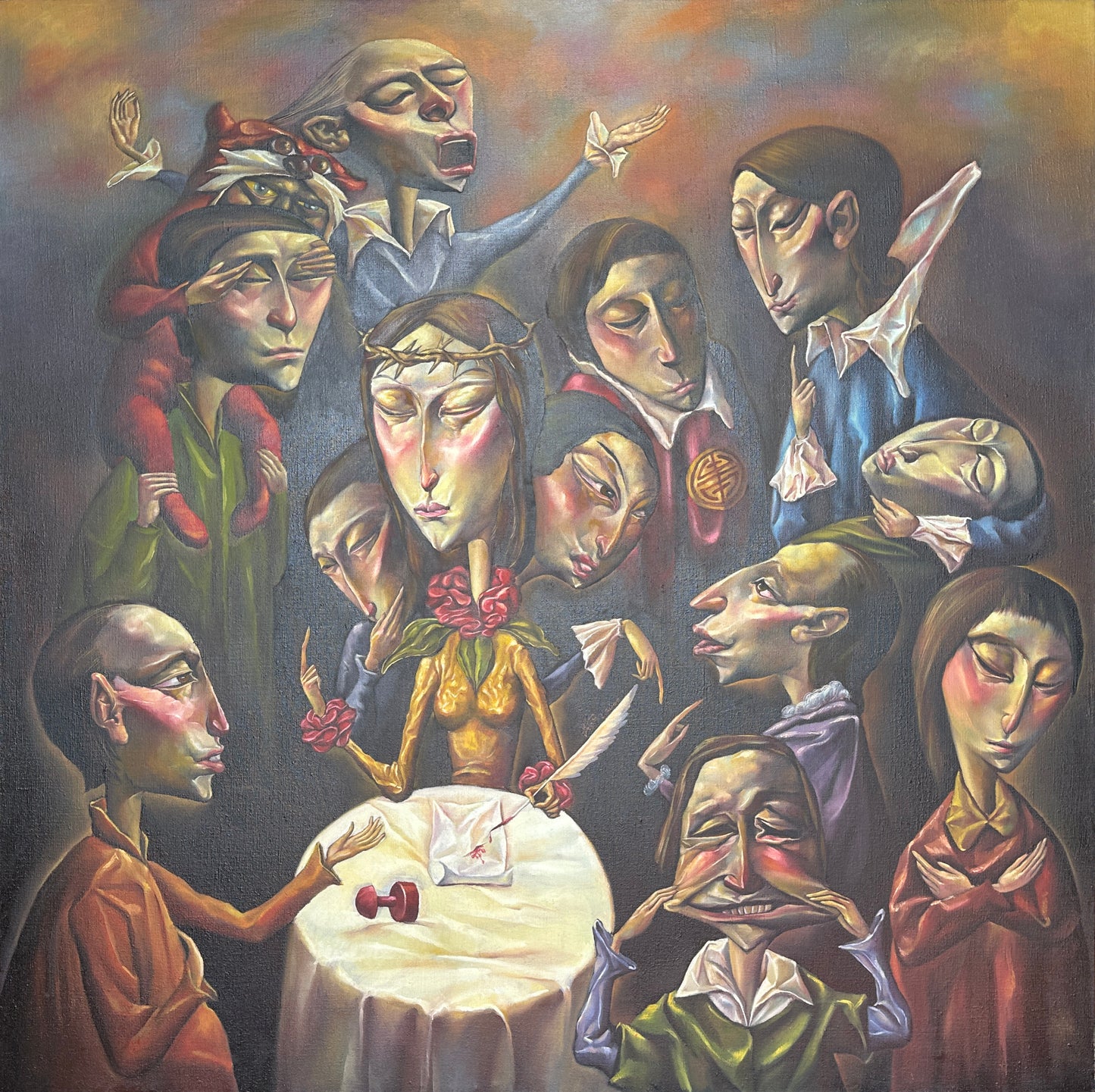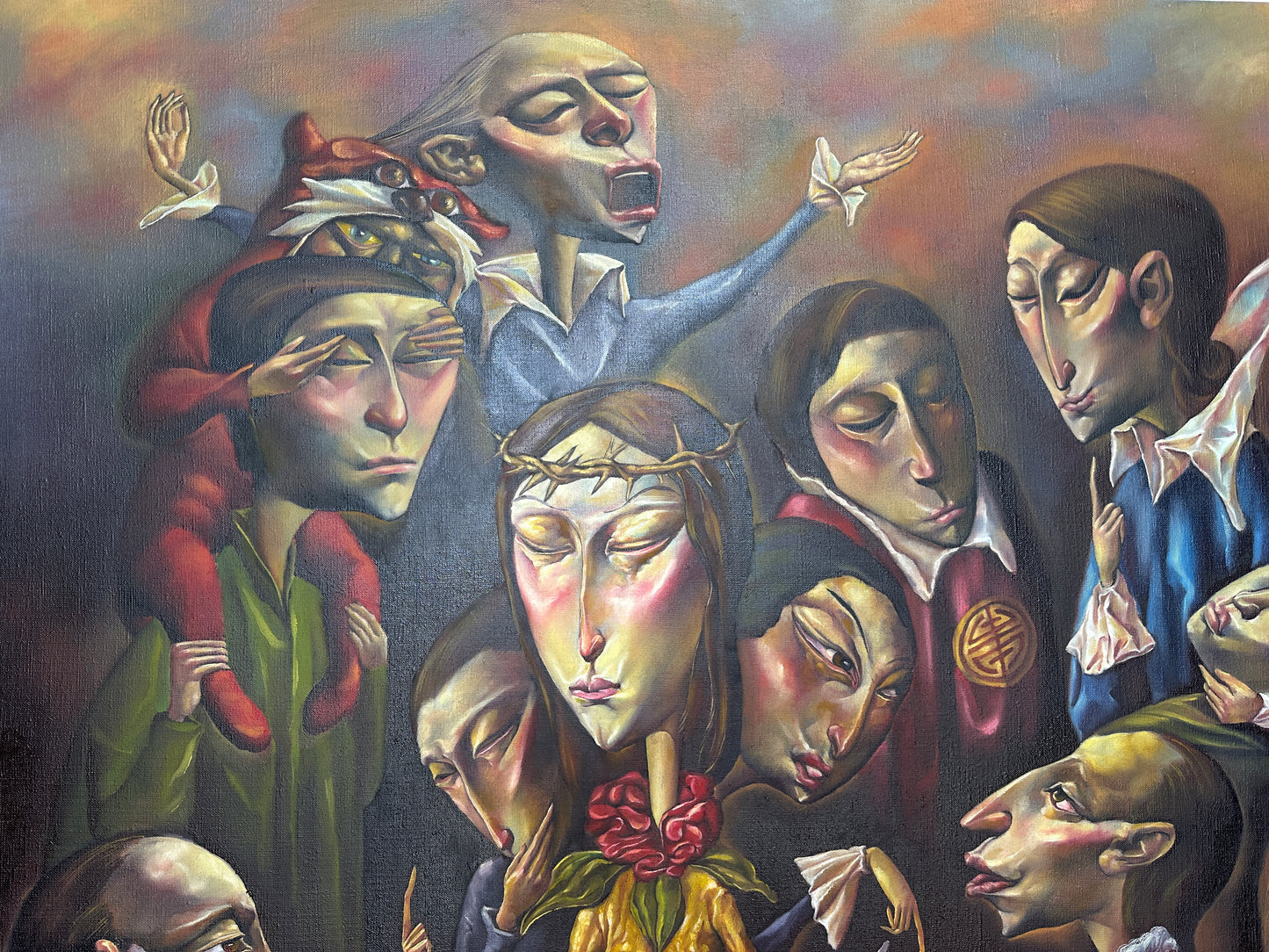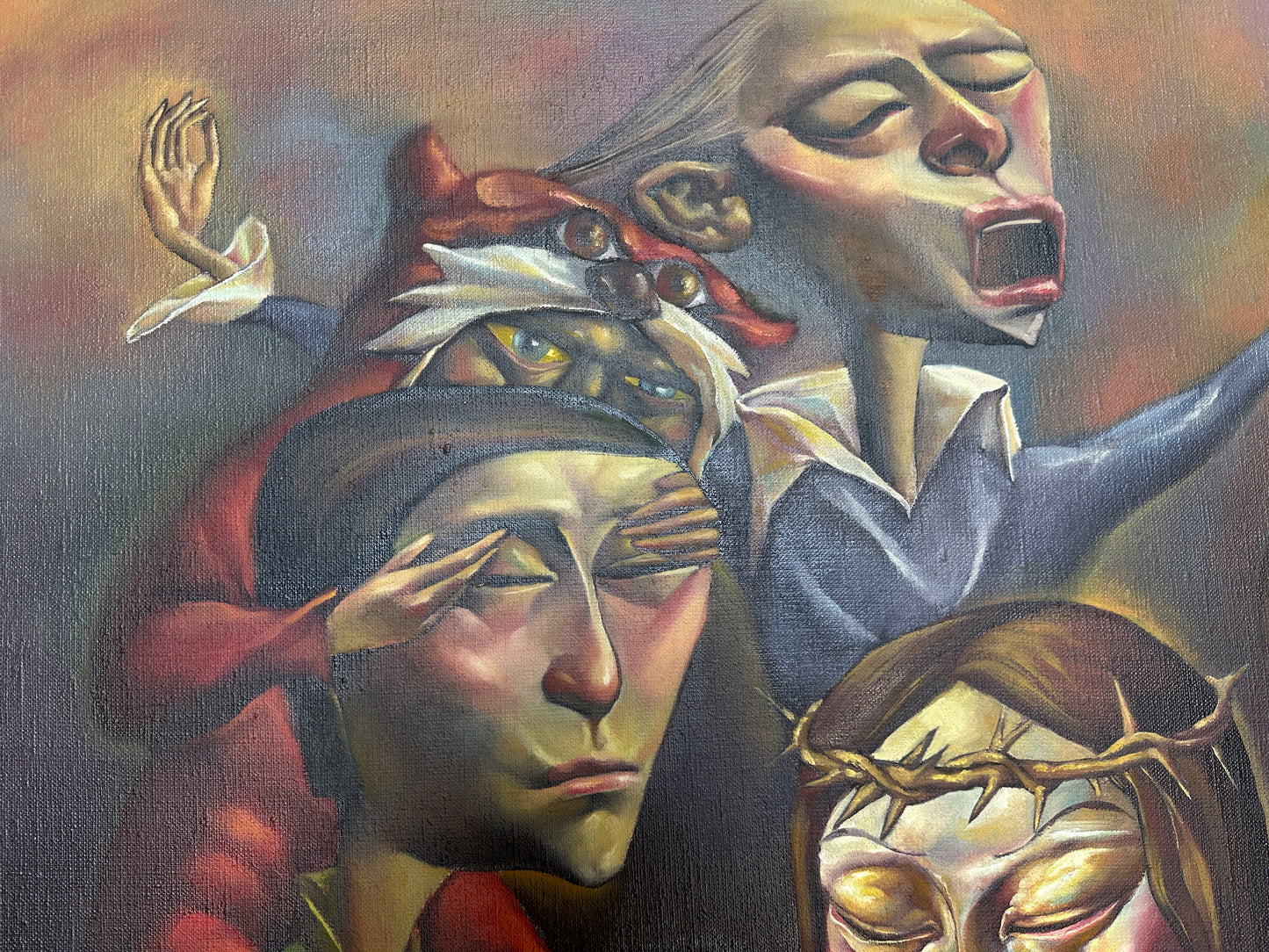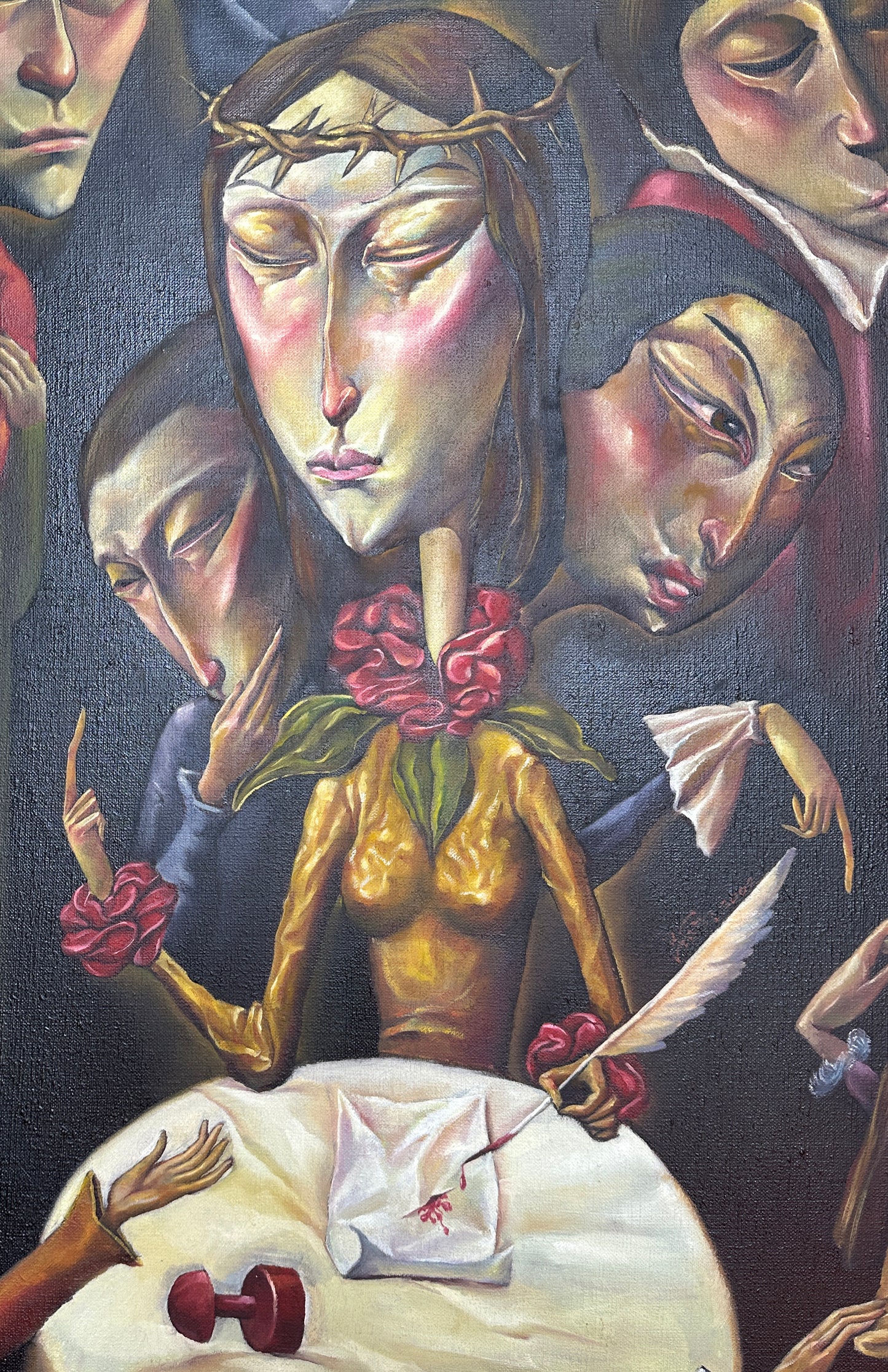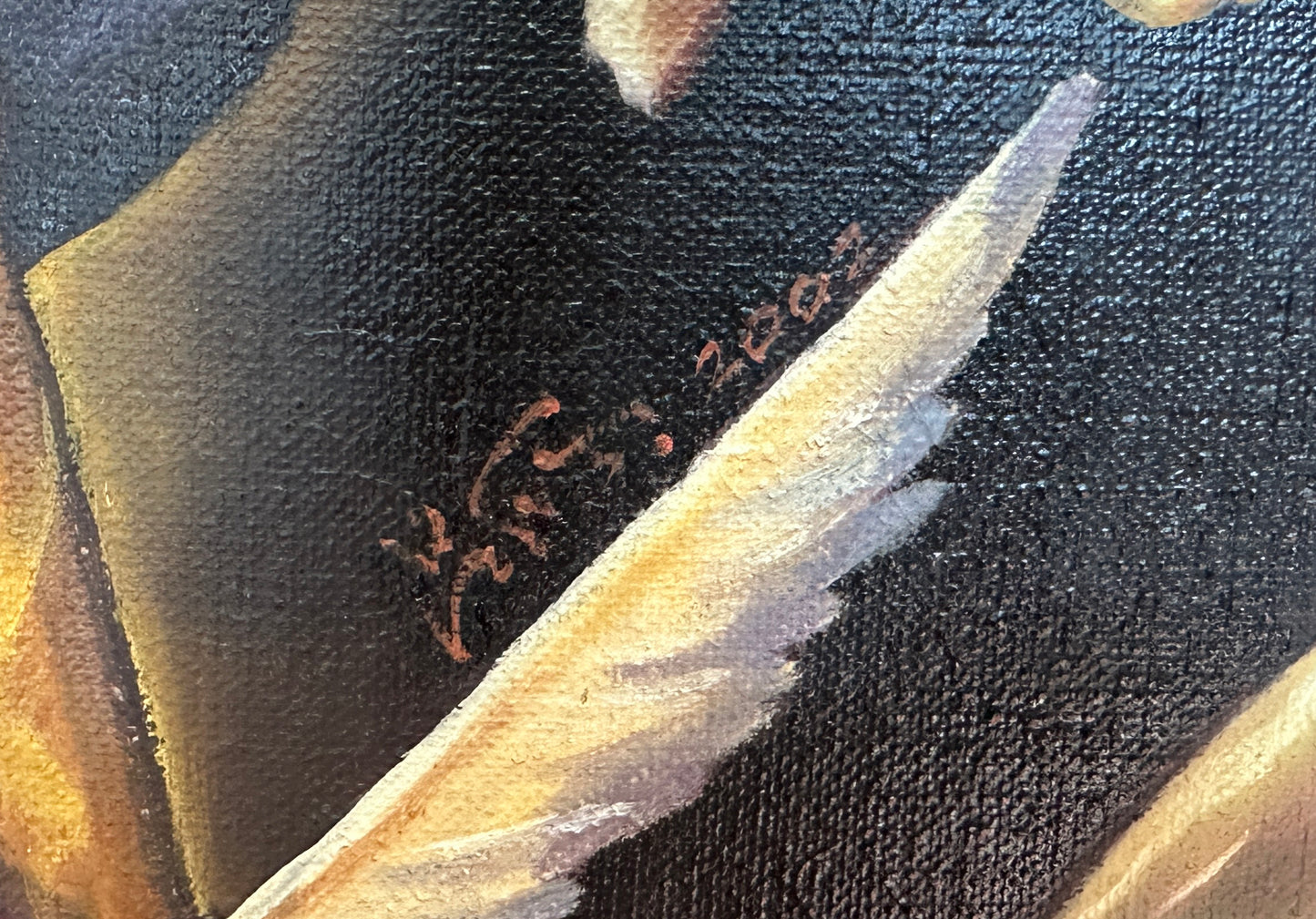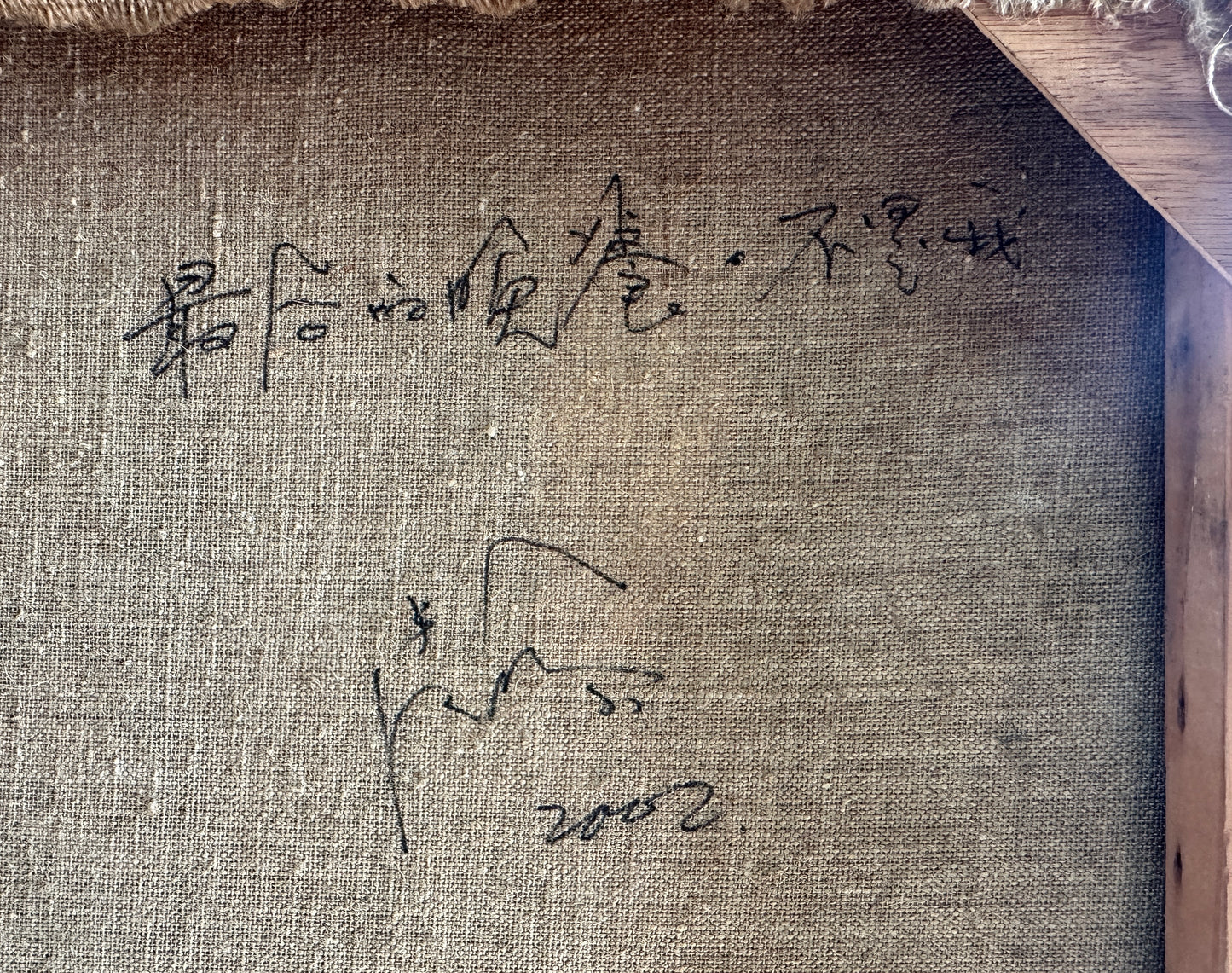bqt.art
The Last Supper, 2002
The Last Supper, 2002
Couldn't load pickup availability
Share
Artist: Lu Xin 呂欣
Title: The Last Supper | 最後的晚餐 - 不是我
Materials: Oil on canvas
Size: 150 x 150 cm | 59 x 59 in (Mounted Frameless)
Rarity: Unique
Medium: Painting
Signature: Hand-signed by artist
Condition: Excellent
Frame: No
This original oil on canvas painting by Lu Xin is a fascinating exploration of narrative ambiguity, rendered in a style that blends elements of surrealism, caricature, and a touch of the grotesque. Let's delve into its various aspects:
Composition and Structure:
Central Focus: The composition centers around a round table, drawing immediate attention to the objects placed upon it: a folded white cloth, a quill, and an inkwell (or possibly a candle holder). This still life element acts as a symbolic core around which the human figures revolve.
Circular Arrangement: The figures are arranged in a loose circle around the table, creating a sense of community or shared purpose, albeit one tinged with unease. This circular dynamic also contributes to the painting's overall feeling of claustrophobia and enclosure.
Stacked Format: The artist employs a slightly tilted perspective and a stacked compositional approach, with figures overlapping and placed at different eye levels. This creates a crowded, almost claustrophobic feel, enhancing the sense of psychological tension.
Subject Matter and Narrative:
Ambiguous Scene: The narrative is intentionally left open to interpretation. The viewer is presented with a collection of characters engaged in an unspecified activity, possibly writing, negotiating, or even plotting. The lack of a clear narrative resolution adds to the intrigue and mystery of the scene.
Symbolic Objects: The objects on the table – the cloth, quill, and inkwell – carry symbolic weight. They suggest themes of communication, documentation, or even confession. Their placement at the center of the composition emphasizes their importance in the unfolding drama.
Character Archetypes: The figures appear as stylized caricatures, each embodying certain archetypes or personality traits. We see figures that seem contemplative, suspicious, arrogant, and perhaps even malicious. Their exaggerated features and expressions contribute to a sense of psychological tension and underlying conflict.
Style and Technique:
Distorted Forms: The artist employs distorted forms and exaggerated features, reminiscent of expressionism and caricature. This distortion serves to amplify the psychological and emotional states of the characters.
Muted Color Palette: The color palette is predominantly muted and earthy, with shades of brown, green, and gray dominating the scene. This subdued palette contributes to the painting's somber and introspective atmosphere.
Textural Brushstrokes: The brushstrokes are visible and contribute to the painting's overall texture. This adds a sense of immediacy and rawness to the work, suggesting the artist's emotional engagement with the subject matter.
Surreal Elements: The dreamlike quality of the scene, combined with the distorted figures and ambiguous narrative, hints at surrealist influences. The painting evokes a sense of unease and psychological depth, much like a surreal dreamscape.
Overall Impression:
This oil on canvas painting is a compelling and enigmatic work of art. Its strength lies in its ability to evoke a sense of mystery and intrigue, inviting the viewer to actively participate in the construction of meaning. The artist's use of distorted forms, symbolic objects, and a muted color palette creates a psychologically charged atmosphere, leaving a lasting impression on the viewer. The painting's ambiguity and open-ended narrative encourage repeated viewings and contemplation, revealing new details and interpretations with each encounter. It is a work that lingers in the mind, prompting questions about human nature, communication, and the underlying tensions that exist within social dynamics.
